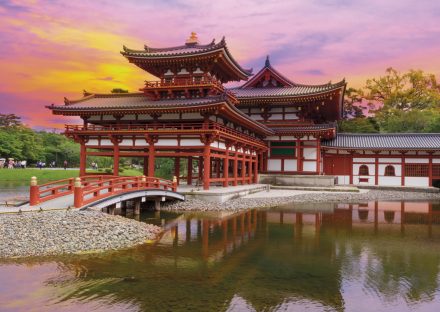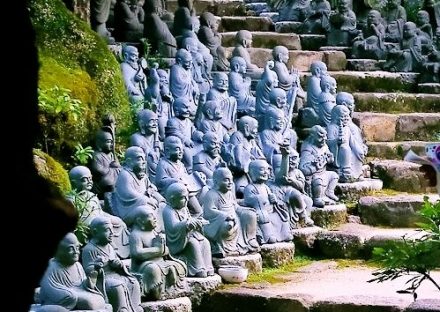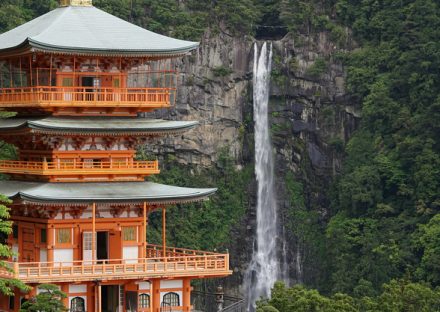- Details
- Itinerary
- Location
- Photos
Tour overview
Tokyo-Tiba-Osaka-Kyoto-Nara-Odawara-Hakone-Tokyo
If you are tired of traditional tours and you are looking for oriental colors, then this tour to Japan is for you. Japan has a fascinating and multifaceted culture, and you’ll be assured of this while traveling to ultra-modern Tokyo and mountainous Kyoto, while visiting the Samurai Museum and the Golden Pavilion.
Day 1 Sunday
Arrival in Tokyo. Meeting with the driver at the airport. Group transfer to the hotel by minibus. Check-in after 16:00 (earlier check-in on request and at an extra charge). Optional: Excursion "Evening Tokyo" by public transport.
Tokyo is a giant, ultra-modern metropolis, where you have to live for several months to see at least half of its attractions. This city is the core of the second most densely urbanized population in the world, which has more than 37 million people. Tokyo stuns the tourists immediately, without preparation. With its numerous areas, with its incredibly complex urban planning, which one cannot understand without the help of the police, with its own independent metro lines, in which you get confused several times a day. At peak hours, the population of Tokyo turns into a human mass, and in the summer, the whole city becomes a giant pressure cooker.
Day 2 Monday
Excursion to Tokyo (09:00 - 17:00). At 09:00 a meeting with the guide. Excursion to Tokyo by metro (with a group of more than 10 people the excursion is carried out by private transport). Moving to the medieval district of Asakusa. Visit Senso-Ji, the oldest Buddhist temple in Tokyo. Here you can buy traditional souvenirs and Japanese delicacies on the Nakamise-Dori shopping street. Dinner. Participation in the traditional Japanese tea ceremony - the master of the ceremony holds a demonstration of tea preparation, and then the guests are given the opportunity to try preparing their own real tea matcha. The next item on the program is the Samurai Museum. Samurai culture is an integral part of the Japanese spirit, so you will have a great chance to touch the traditions of the military class. The museum contains original armor, ammunition, swords and other samurai paraphernalia of different eras. At 15:00 a mini-show for 15 minutes about samurai traditions, as well as a demonstration of the art of instantly drawing a sword out of its sheath is a fascinating spectacle of the sudden appearance of a ground blade. At 16:00 ascending to the observation deck in the Tokyo City Hall building. Above you have a breathtaking panoramic view of the capital. Delivery of passports to the guide for ticketing and activation of travel. Check-out without the original passport is not possible. In case the passport is not provided, a surcharge is required for discharge on another day. Return to the hotel.
The ancient temple of Senso-Ji or Asakusadera is located in the Asakusa district of Tokyo. The main entrance to the temple is Kaminarimon - "Gates of Thunder". This is a very impressive building of Buddhist architecture, with large paper lanterns, which are painted in red and black and represent lightning and thunderstorm clouds. Each visitor undergoes a purification ceremony, by washing hands and fumigating with incense. The worshipers of the Senso-ji temple believe that by rubbing a sore spot with incense from the temple, you can get rid of the disease. Before praying, you need to slap twice in the palm of your hand in order to notify the gods of your presence, then you must bow and throw a coin before asking them for something. In the center of the hall, according to tradition, you can experience the "fate" with the help of cards, but they are only in Japanese and if you suddenly take an unfavorable card, then leave it in the temple, and if it's good - take it home.
The Samurai Museum in Tokyo is a fascinating sightseeing showing one of the most important Japanese cultural and historical events. This exhibition was opened to tell tourists arriving in the country as much information as possible about the legendary Japanese warriors. The building that the museum occupies is small. All exhibits fit only on two floors. Warrior armor is displayed on the first floor. By the way, most of the exhibits are not a reproduction. This is the real armor that defended the soldiers in the battles a hundred years ago. On the second floor, there are swords, guns, armor, a helmet and many other accessories used by the Samurai.
Day 3 Tuesday
Excursion and transfer to Tiba. (09:00 - 17:00). Check out from the hotel with things. At 9:00 meeting with the guide. Moving to Tiba by registered transport. The itinerary includes travel on the Aqualine highway, part of which lies beneath the Gulf of Tokyo. Opened in 1997, the highway connects the city of Kisarazu and the city of Kawasaki, located on opposite sides of the bay. In the middle, the air and underwater parts are separated by the artificial bulk of the island of Umi Hotaru (translated as “sea firefly”), where there is a parking area, a rest zone, a cafeteria and a mini-museum dedicated to the history of the underwater tunnel construction process. Further, moving and visiting the Kamea cave, which gained fame due to the fact that the landscapes created by the play of light, water and stone, surprisingly resemble the famous animated films of the Ghibli studio “Spirited Away” and “Princess Mononoke”. Initially, the cave tunnel served as a diversion of river water to neighboring terraced rice fields, so a mill stood next to the tunnel. Then, you will have a visit to the aqua-complex - a zone with a hot mineral spring, a year-round indoor pool, a sauna, and other entertainment! Lunch in the complex. At the end of the tour check in to the hotel. Relaxation. Attention!-you must have a swimsuit with you or rent on site for an extra charge (about 5 dollars per person.
Tiba is an administrative center and located 40 km east from Tokyo. The monorail road in Tiba is about 15 kilometers long and it is considered as one of the longest in the world. In the port of Tiba, there is a 125-meter-high tower, which is surrounded by beautiful landscapes and provides a good view of all the ports. In addition, you can also visit the zoo and the museum, the art beach Inaga. The Fokkou Museum and the Bosonomoore museum are located in the neighborhoods of the park in which there are many newly renovated old houses.
Day 4 Wednesday
Moving to Osaka, an excursion to Osaka. Check out at 8 am from the hotel. Passing to the station by shuttle with the coordinator. Moving to Osaka by train on your own (with the overpass to Tokyo). At 12:30 meeting with the guide at the platform of the train. Dinner in a local restaurant. Then visiting Osaka Castle which is a five-storeyed Samurai Castle, playing a key role in the Japanese history at the end of the XVI century and at the beginning of the XVII century, you can enjoy the panoramic city and its surroundings from the outskirts of the 173th floor of the ultra-modern office blocks - Uday Sky Direction. At the end of the excursion check-in at the hotel in Osaka.
Osaka is one of the largest cities in the country, a famous trading port, and industrial center. Due to its rich history, excellent climatic conditions and picturesque natural landscapes, the city quickly gained popularity as a tourist center. Those who like to visit memorable places and fascinating excursions will surely like it because there are a lot of sights in the city. One of these attractions is Osaka Castle. Commander Toyotomi Hideyoshi founded the castle in 1597 on the site of an old temple. The castle in Osaka was planned to be built inapproachable, but more colossal in all respects. That is why the structure not only rises up to 5 floors, but also goes to 3 floors on the ground, and the walls of the tower are covered with gold leaf.
Day 5 Thursday
Sightseeing tour in Kyoto (09:00 - 19:00). At 09:00, meeting with the guide in the hotel lobby. Sightseeing tour by registered transport in the city of Kyoto, which was the center of Japanese civilization for over a thousand years. Visits to the world-famous Golden Pavilion - Kinkakuji. In the garden of the pavilion, there is a pond "Mirror Lake". The reflection of the Golden Pavilion in the waters of the pond creates a truly amazing sight. A visit to Nijo Castle, famous for its “nightingale” floors. The floors in the castle are installed in such a way that it is impossible to step on it without creating noise. The creaking of the floors resembles the singing of birds, for which he received its name. Lunch at the restaurant (buffet). A visit to a kimono factory and a mini kimono show. A visit to the temple Kiyomizu-Dera, the main pavilion of which stands on high wooden stilts on the hillside. This view is the hallmark of the city and is depicted on postcards, magnets, and other souvenirs. Walk through the old district of geishas - Gion, famous for its traditional ancient architecture and many cozy shops with local products. Return to Osaka.
Comfortably nestled among the mountains of West Honshu, Kyoto was the ancient capital of Japan and the residence of the Emperor for a millennium. During this time, Kyoto accumulated a unique collection of palaces, temples, and shrines built for emperors and monks. Today, it is considered to be one of the most beautiful cities in the country, being the keeper of many of the oldest monuments of architecture and art. The Golden Pavilion (Kinkakudzi), one of the main Buddhist temples in Kyoto, is literally covered with gold - the top two floors are completely covered with sheets of gold leaf. The crystal surface of Lake Kokoti (“Lake Mirror”), on the bank of which the pavilion rises, reflects the magnificent radiance of this golden wonder, and the isles and stones only emphasize its exquisite beauty.
Nijo Castle is one of the most famous buildings of the former capital Kyoto and all of Japan. In fact, this is a whole complex consisting of many buildings, among which the central place is given to the palace with the “nightingale” (“singing”) floors of Ninomaru. It is so named because the floorboards of the flooring are designed in such a way that with every step of a person they emit a characteristic creak, similar to the chirping of birds. This trick was done in order to prevent the infiltrators from entering.
Day 6 Friday
Free day in Osaka. Free time in Osaka. Optional: Excursion to Nara by public transport at 09: 00-14: 00 or visit the theme park Universal Studios Japan.
Nara is located on the island of Honshu, surrounded by forests and hills. Most of the sights of Nara, including numerous temples and shrines, are concentrated in Nara Park, home to more than 1,200 wild spotted deer, previously considered divine envoys. According to legend, after the proclamation of Nara as the capital of Japan, the god of the sanctuary arrived to protect this city on a white deer. Since then, the deer has been considered to be the envoys of the gods, protecting the city and country.
Day 7 Saturday
A free day in Osaka. Return to Tokyo. Check out from the hotel with things until 10:00. Travel to Tokyo on your own and check-in at the hotel (check-in at hotel 2 from 16:00, at hotels 3 and 4 * from 15:00). Optional: Excursion to Odawara and Hakone by public transport.
Just an hour and a half by train from Tokyo and you’ll find yourself in the pleasant town of Odawara. The city is known for the beautiful Odawara Castle, built in 1590. It contains an interesting collection of samurai armor and swords. On the territory of the castle park, there are a lot of trees Sakura and Ume and there is a small zoo.
Hakone is located in Fuji-Hakone-Izu National Park, rich in nature. The most popular among tourists is the Ovakudani Valley, which was formed during a volcanic eruption about 3,000 years ago. Anyone can take the Hakone cable car and climb to a height of 1044 meters, from where you can observe the volcanic activity.
Day 8 Sunday
End of the tour. Check out from the hotel before 10:00. Meeting with the driver in the hotel lobby. Group transfer to the airport.
Google Maps API Key is not set. You can add your Google Maps API Key under Customizer > Misc options panel. If you do not have one yet then create by clicking here.



